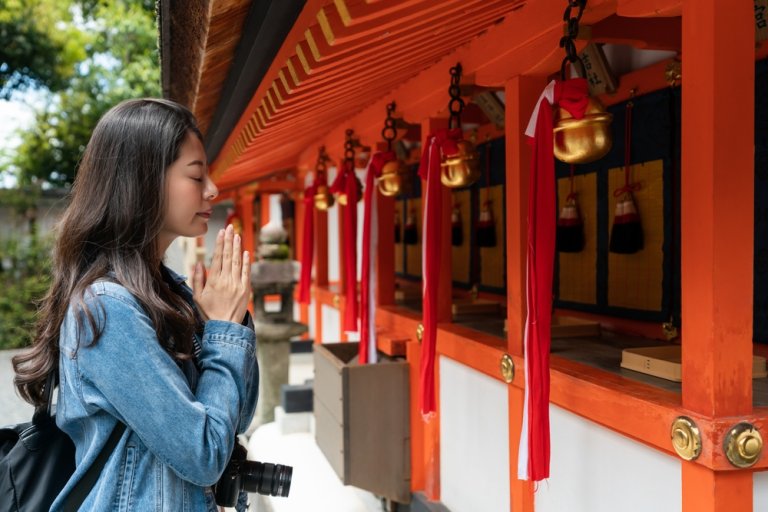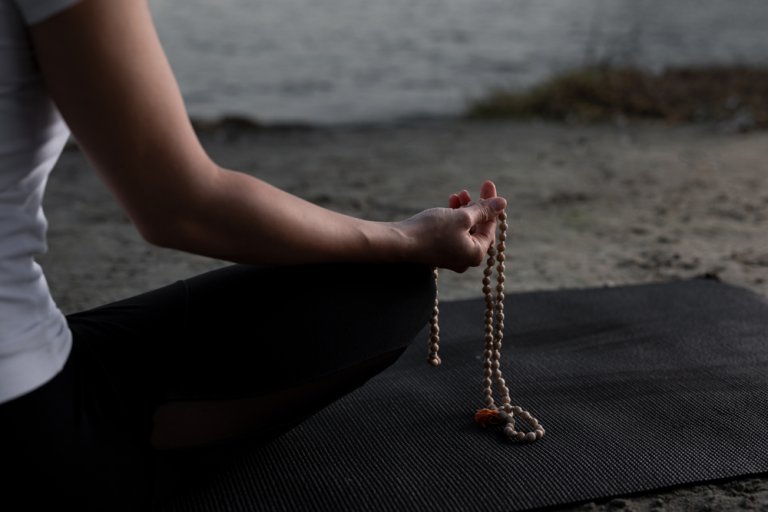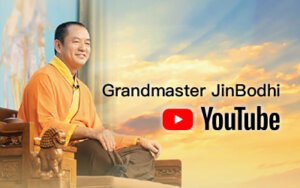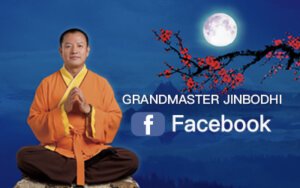
Introduction to Buddhist Prayer
Buddhist prayer, a fundamental spiritual practice within Buddhism, serves as a means to cultivate mindfulness, compassion, and a deep connection with the divine aspects of the universe. Buddhist prayers are often expressions of gratitude, compassion, and the aspiration for enlightenment for all sentient beings. Buddhist morning prayers, are often practiced and are considered the most important practice in a day as they help set the mood and mindset for the rest of the day. The act of praying allows one to be integrated with the Universe, becoming one with Heaven and Earth and resonates with all sentient beings. In such a state, getting help and support from the Universe becomes much easier.
The purpose of Buddhist prayer is not just to connect one to the Universe but also to help one develop qualities such as compassion, wisdom, and gratitude more effectively. Buddhist prayers come in many different forms, with chanting and mantras being the more familiar ones to the general public. By praying, practitioners aim to transform their minds and hearts, aligning themselves more closely with the enlightened qualities they revere.
How to Perform Buddhist Prayers
Performing Buddhist prayers involves several steps to ensure a focused and respectful practice. These steps help create a conducive environment for spiritual practice, enhancing the efficacy and depth of the prayers.
Setting Up for Prayer
- Find a Peaceful Location: Choose a quiet, clean space where you won’t be disturbed. This could be a dedicated meditation room or a quiet corner in your home, or at a Bodhi Meditation center.
- Posture: Sit comfortably cross-legged or on a chair with your feet flat on the ground. Keep your back straight and your hands resting on your lap or in a prayer mudra (hands together, palm to palm, at chest level). Proper posture helps maintain alertness and allows energy to flow freely.
Mental Preparation
- Calm Your Mind: Spend a few moments in silence, relaxing your body, and focusing on your breath to center your thoughts. This initial calming helps to settle the mind and prepare it for prayer.
- Set Your Intention: Clearly state your purpose for the prayer, whether it is for compassion, healing, wisdom, or another aspiration. Setting a clear intention helps direct the focus and energy of the prayer.
Writing Down Prayers or Wishes
Consider writing down your prayers or wishes to help focus your mind and intentions. This practice can make your prayers more personal and meaningful. A written record can also remind you of your spiritual goals and aspirations.
Using Prayer Beads
You may use a mala (prayer beads) to count mantra recitations, which helps maintain concentration and deepen the meditative state. Malas typically consist of 108 beads, and they can be made of many different materials, such as wood, agate, jade, coral, Bodhi seed, tridacna, or other precious stones. Hold the mala in your hand; as you chant, slide a bead over to mark each repetition of the mantra. The tactile experience of moving from bead to bead can also enhance mindfulness during prayer.

Concluding with Gratitude
End your prayer session with gratitude, thanking the figures you prayed to and reflecting on the positive energy generated. Expressing gratitude helps to cultivate a positive and appreciative mindset, reinforcing the beneficial effects of the prayer.
For additional resources on meditation poses and related practices, you may find this article on meditation sitting position helpful.
Key Figures in Buddhist Prayer
Buddhist prayer often involves venerating key figures who embody specific virtues and provide spiritual guidance. These figures, known as Buddhas and Bodhisattvas, represent various aspects of enlightenment and are revered for their exemplary qualities and compassionate actions. While there are no specific times for prayer, certain occasions and purposes may prompt devotees to pray to these figures.
Guanyin (Avalokitesvara) Bodhisattva
Guanyin Bodhisattva, also known as Avalokitesvara, is the more well-known figure in both the Buddhist and non-Buddhist communities. She is revered for her boundless compassion and mercy, often depicted as listening to the cries of the world. Devotees pray to Guanyin for comfort and assistance in overcoming suffering. Her mother-like figure and compassionate nature is a source of solace and strength for many, making her one of the most beloved figures in Buddhism. By chanting the name of Guanyin Bodhisattva daily, one can cultivate a connection with the Bodhisattva’s compassionate heart, leading to an increase in fortune and winsome, and paving the way to achieve ultimate liberation.
Sakyamuni Buddha
Sakyamuni Buddha, whose actual name is Siddhartha Gautama, most commonly known as the Buddha, is the founder of Buddhism. He was born to a royal family but decided to leave palace life to search for a path of liberation. After about 6 years of meditation, study, and deprivation, he became enlightened under the Bodhi tree. Thus, he vowed to free all from the suffering of birth, old age, disease, and death. Prayers directed to Sakyamuni Buddha often seek wisdom and guidance on enlightenment. His teachings serve as a foundation for Buddhist practice, emphasizing the importance of self-awareness and moral conduct. Bathing the Buddha is an annual ceremony to celebrate Sakyamuni Buddha’s birthday where people bathe the body of the Buddha statue in a cleansing ritual which carries much significance and benefits.
Medicine Buddha
Medicine Buddha, also named Medicine Buddha Lapis Lazuli Radiance Tathagata or the Lord of healing, is the lord of the Eastern Lapis Lazuli World. He made twelve great vows, to help all sentient beings by freeing them from the torment of afflictions and sickness. He vowed that upon his enlightenment, all beings would be blessed with peace, joy, an abundance of food and clothing, as well as protection from all disasters and diseases. The vows included almost all the good things in human life, so that all sentient beings could approach Buddhism without lack for anything in their lives. Known for his immeasurable wisdom and powerful dharmic abilities, devotees seek his aid in overcoming physical and mental ailments. Refer to this page to find out more about the Medicine Buddha and the mantra that connects to Medicine Buddha.
Guru Rinpoche
Guru Rinpoche, or Padmasambhava (born-of-a-lotus), is associated with protection from evil. A revered figure in Tibetan Buddhism, Guru Rinpoche is credited with bringing Buddhism to Tibet and taming the local deities. Prayers to him are intended to remove obstacles and protect against negative influences. His teachings and mantras are believed to offer powerful protection and spiritual insight. To learn more about who should chant Guru Rinpoche’s Heart Mantra, you can refer to this guide.
Earth Store (Ksitigarbha) Bodhisattva
The Earth Store Bodhisattva, also known as Ksitigarbha Bodhisattva in Sanskrit, is revered for his vow to aid all beings in the six realms of existence, especially those suffering in hell. Thus, he is commonly associated with the Ullambana Festival, when the gates of hell open and we may make offerings to our deceased loved ones. Though many have the misconception that he only manages the underworld, prayers for him do not just help the deceased loved ones but also help reduce obstacles in the present life. There are in fact 28 benefits of paying respect to the Earth Store Bodhisattva Sutra, and it involves both living beings and the deceased ones. Due to Earth Store Bodhisattva’s great vow to “not achieve Buddhahood until all sentient beings are saved and hell is empty”, he has become the primary source of hope for people seeking liberation in the afterlife. Click here to find out more about the Earth Store Sutra.
Practical Prayer during Meditation
Meditation in Buddhism often incorporates the recitation of mantras, powerful tools for focusing the mind and cultivating specific qualities. One of the most widely used mantras is the Six-Syllable Mantra (Om Mani Padme Hum), associated with Avalokitesvara (Guanyin). This mantra embodies the essence of compassion and is believed to purify the mind and accumulate merits and enhance compassion.
The Six-Syllable Mantra is not just a set of words but a profound practice that involves visualization and deep spiritual connection. It contains the boundless compassion and blessings of all Buddhas and Bodhisattvas, radiating incredible energy. By following the Chanting of the Six-Syllable Mantra with Grandmaster Jinbodhi, practitioners can visualize and chant this mantra, experiencing the illuminating realm of becoming one with Heaven and Earth.
Reciting mantras during meditation serves multiple purposes:
- Focus: It helps maintain concentration and prevents the mind from wandering.
- Vibration: The sound vibrations of the mantra can induce a calming effect on the mind and body.
- Intention: Repeating the mantra with mindfulness aligns the practitioner’s intentions with the compassionate qualities of Avalokitesvara.
When chanting the Six-Syllable Mantra, practitioners are encouraged to do so with compassion and kind thoughts, allowing themselves to become one with the mantra. This integration is the best relaxation and purification for the body and mind. By sincerely chanting and visualizing with compassion, the merits and energy generated can spread throughout the world, benefiting all sentient beings.
The practice also involves visualizing that all sentient beings are healthy and happy, combining compassion, desire, and wisdom. This method is the most effective way to practice. Cultivation through chanting produces energy, creating a vast and limitless field of compassion that resonates with all beings, embodying the unity of Heaven, Earth, and humanity.
Thus, each mantra chanted sends all good things to countless sentient beings, enhancing the practitioner’s spiritual journey and contributing to universal well-being.
For additional guidance on chanting and mantras, you can explore our resources.
Conclusion
Engaging in Buddhist prayer can enrich your spiritual journey, fostering a more profound sense of peace and connection. It is a practice that can be integrated into daily life, providing moments of reflection and spiritual renewal. Participating in local and online prayer sessions can enhance your understanding and practice of Buddhist prayer.
Resources such as Bodhi Meditation Retreats offer information on weekly prayer chanting sessions and prayer lists, helping you connect with a broader community of practitioners.

